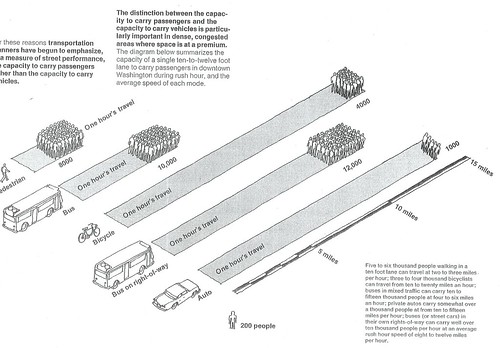What should a US national bike strategy plan look like?
By Richard Layman, Rebuilding Place in the Urban Space
I pissed off some people a couple days ago when I commented that three presenters (from Ontario, UK and Australia) providing guidance to US stakeholders about creating a national bike strategy didn't have much to offer us.
So I have been thinking about what should be included in the introductory components to a US national bike strategy plan.
Sure, some of these places have more bike commuters than we do nationally, but the US is a lot more suburban and gasoline is taxed much less, which makes a huge difference, which was captured in an article by John Pucher, "Why Canadians cycle more than Americans: A comparative analysis of bicycling trends and policies" from Transport Policy journal:
It should be no surprise that the US and the UK (e.g., "Britons unmoved by pro-cycling campaigns: Most regard bicycles not as legitimate form of transport but as children's toys or preserve of hobbyists, research finds," Guardian), given the prevalence of the "vehicular cycling" concept, have significantly fewer people cycling for transportation compared to countries where sustainable mobility is actively promoted.In spite of their colder climate, Canadians cycle about three times more than Americans. The main reasons for this difference are Canada’s higher urban densities and mixed-use development, shorter trip distances, lower incomes, higher costs of owning, driving and parking a car, safer cycling conditions, and more extensive cycling infrastructure and training programs. Most of these factors result from differences between Canada and the United States in their transport and land-use policies, and not from intrinsic differences in history, culture or resource availability.
That doesn't mean we can't learn from those places.
...
2. Change how DC Government benchmarks its policies and regulations against the nation's leading cities with the aim of adopting best and leading practices, rather than being content with making changes that still lag best practice.
[B' Spokes: It amazes me how many in government are content in areas where we are below average. We need benchmarks that can help put us above average, at least a little bit. ]
...
2. Transportation Physics and Mobility Throughput. This is pretty basic, that you can move more people by walking or transit or biking in the same amount of space used by cars. E.g.


Mobility efficiency diagram. Central Washington Transportation and Civic Design Study, 1977.
...
http://urbanplacesandspaces.blogspot.com/2014/03/what-should-us-national-bike-strategy.html
[B' Spokes: I highly recommend that the planers and advocates read the whole thing.]